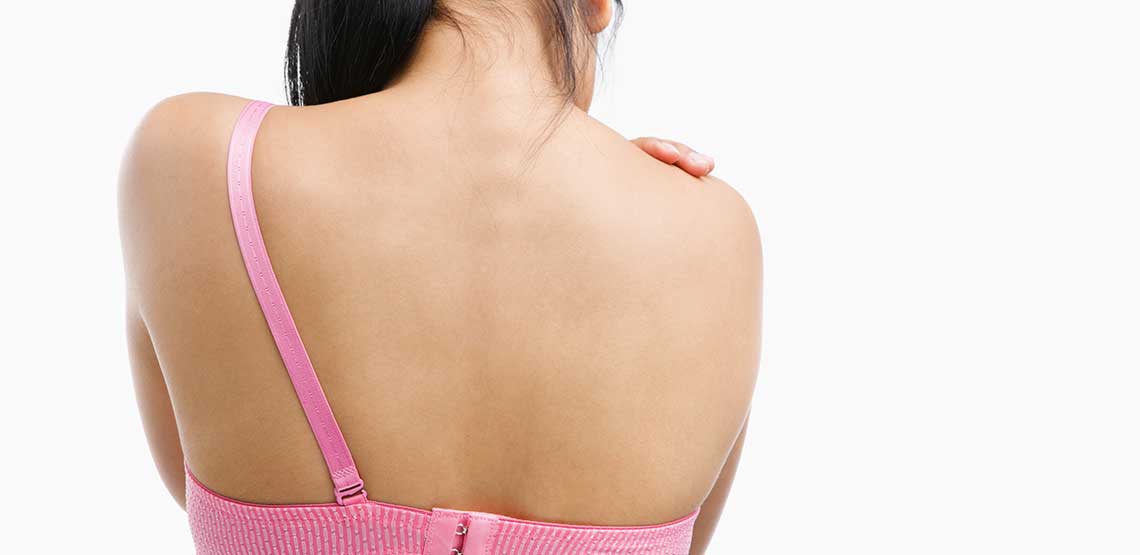The Importance of the Breast Cancer Self-Exam
Breast cancer is one of the most common cancers in women. According to the American Cancer Society, breast cancer is the second most common cause of cancer death in women just after lung cancer. In the United States, the average woman’s risk of developing breast cancer is about 13%.
Why Is Early Detection Key?
The American Cancer Society also estimates that about 42,000 women die of breast cancer each year in the United States. But early detection is key to improve survival rates.
Early detection usually means breast cancer is caught at an earlier stage. Catching breast cancer before it has spread to the lymph nodes or other areas of the body greatly improves prognosis.
Cancer prognosis is often measured by the five-year survival rate. This does not mean a person will only survive five years. It refers to the percentage of people that are alive at the five-year mark.
According to the Susan G. Komen Foundation, the five-year survival rate for localized breast cancer is 99%. Regionalized breast cancer involves cancer that has spread to nearby lymph nodes, but not distant sites, and it has an 86% five-year survival. But prognosis becomes much worse when breast cancer had spread to distant organs, with the five-year survival rate dropping to only 27%.
The Key Takeaway
When breast cancer is detected early, it is most likely localized or regional, which greatly improves prognosis. Breast cancer screening is an important part of a woman’s health program. Self-breast exams are part of the screening process.
How to Do a Breast Cancer Self-Exam
A self-breast exam involves an inspection and exam of your own breasts to determine if any changes are present that may indicate a problem. A self-exam will not diagnose breast cancer. But it will alert you to a change, so you can seek further medical evaluation. Research published in the Journal of Women’s Health found that about 25% of breast cancer is found through a self-exam.
According to the National Breast Cancer Foundation, breast cancer self-exams should be performed at least once a month. During the exam, a woman is checking for changes to the breast, such as the following:
- A lump
- Swelling that does not go away
- Redness or warmth of the breast
- Pain
- A thickening of the tissue
There are different ways to perform a self-breast exam. Try various methods to determine what works best. You can perform the exam while standing in front of a minor or in the shower, as well as lying down.
Standing in Front of a Mirror
To perform an exam standing up, do the following:
First, stand in front of a minor with your arms at your sides and look at your breasts. Notice any changes, such as swelling, redness or changes in the skin.
Next, place the arm behind your head on the same side as the breast you are checking. Use the flat part of your three middle fingers to check the breast for lumps or knots. Press firmly and follow up and down or use a circular motion to check the entire breast and under the arm for any changes. Squeeze the nipple slightly to check for discharge. After you have checked the entire area, check the other breast.
Some women prefer to do the exam in the shower. Soapy fingers may make it easier to detect small knots or changes to the breast.
What You Have to Keep in Mind
Keep in mind, the right and left breasts may not be exactly the same. Many women have breasts that do not match exactly. You’re not looking for symmetry; you’re looking for changes to the breasts.
Some women find that their breasts are sore the week before and during their period. Fluctuating hormone levels can also cause some changes in the breasts.
When Should You Check?
The best time to perform a breast exam may vary, but many women find it is most comfortable the week after their period ends. Try to perform the breast exam around the same time every month to get in the habit, so you don’t forget.
Limitations
Please remember that a breast self-exam is not to be used instead of a clinical breast exam by your doctor or a mammogram. Mammograms are still considered the gold standard in detecting breast cancer. But routine mammograms are not prescribed for younger women who are considered low risk for developing breast cancer.
Plus, mammograms are typically only performed once a year. Self-breast exams can be performed every month in your own home. The exams are considered supplemental breast cancer screening in addition to clinical exams and/or mammograms, depending on your age.
When to See a Doctor
The first few times you perform a breast self-exam it may be difficult to determine if there are changes. But as you continue to perform the exams monthly, you’ll likely spot changes easily.
You should see a doctor if you notice any of the following:
- A hard lump
- Dimples or ridges on the skin of the breast
- An inverted nipple
- Swelling, warmth or redness
- Sores on the breast
- Thickening of the breast tissue
- Discharge from the nipple if you are not pregnant or breastfeeding
If you find a lump, knot or changes to your breast, it can be frightening. Keep in mind that most lumps are not cancerous. However, it is still vital to contact your doctor for further evaluation.
